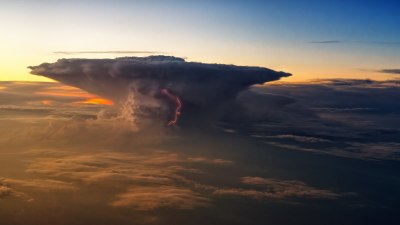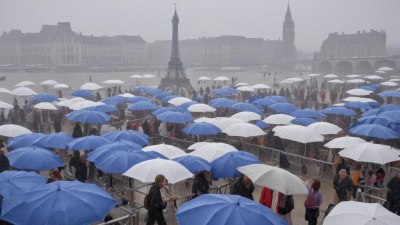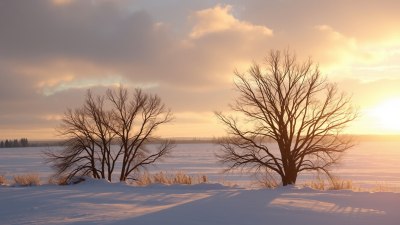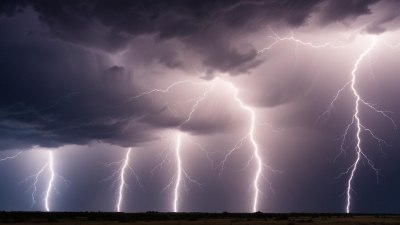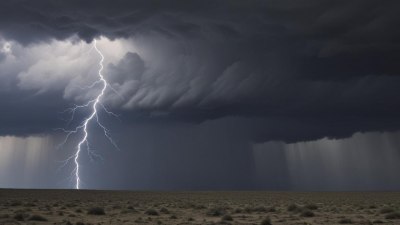The Strangest Snowstorms in History
Explore the most bizarre and unusual snowstorms recorded throughout history.

This image was created with the assistance of Freepik
Snowstorms are a natural phenomenon often associated with winter wonderlands and picturesque landscapes. However, history has seen its fair share of strange and bizarre snowstorms that have left a mark on both meteorology and popular culture. From inexplicable weather patterns to unusual snowfall events, these strange snowstorms have not only changed the environment but have also impacted the lives of those who experienced them. In this article, we will delve into some of the strangest snowstorms throughout history, exploring their unique characteristics and the effects they had on the affected regions.
The Great Blizzard of 1888
Known as one of the most devastating winter storms in American history, the Great Blizzard of 1888 struck from March 11 to March 14, greatly affecting the northeastern United States. What made this snowstorm particularly strange was its ferocity and impact within a short time frame. Within 24 hours, some areas reported snowfall of over 40 inches, accompanied by hurricane-force winds reaching up to 70 miles per hour. The storm resulted in over 400 fatalities and disrupted transportation and communication systems significantly. This blizzard also led to future advancements in weather forecasting and emergency preparedness that would shape the way storms were handled in the future.
The Blizzard of 1996
The Blizzard of 1996 is another striking example of an extreme snowstorm that baffled meteorologists and left a lasting impression on the Eastern United States. Falling between January 6 and 8, this storm dropped well over 20 inches of snow in many areas, particularly impacting Washington, D.C., where the city was paralyzed for a week. The strange aspect of this snowstorm was not just the amount of snow but the timing; it occurred during a time when many people had disregarded winter storm warnings, resulting in numerous motorists stranded on highways. The storm profoundly affected travel, with airports closed and public transit halted, illustrating the chaos that can follow a snowstorm. The Blizzard of 1996 remains memorable not only for the sheer quantity of snow but also because it demonstrated how quickly and unexpectedly winter storms could manifest.
The Snowstorm of 1933
In mid-March 1933, a snowstorm swept across the central United States, producing bizarre weather phenomena. This storm brought unusually high temperatures before the snowfall, with many areas experiencing temperatures hovering around 70 degrees Fahrenheit just days before the snow fell. The storm accumulated more than 12 inches of snow in several states, creating hazardous traveling conditions and the odd contrast of warm and cold temperatures preceding the snow. The strange juxtaposition of these temperatures baffled residents and led to unusual snow-related incidents that would not have occurred during a typical winter event, making it a noteworthy occurrence in the history of meteorological anomalies.
The ‘Snowstorm’ of January 1966
One of the strangest winter occurrences in recorded memory is the event commonly referred to as the ‘Snowstorm’ of January 1966 in the southeastern United States. Unlike typical blizzards that deliver only snow, this storm produced mixtures of snow, sleet, and freezing rain, which created disastrous conditions across states like Georgia and South Carolina. What set this storm apart was the unusual temperatures leading up to and during the event, as well as the rare combination of wintry precipitation types. Many cities in these regions were unprepared for the harsh winter conditions, leading to infrastructural chaos, especially on roadways. Vehicles were abandoned, and reports indicated that people had difficulty even walking due to the icy conditions resulting from the frozen mix.
Lubbock's Snowfall in 1956
Another notable bizarre weather event involving snow occurred in Lubbock, Texas, in 1956. On April 7 of that year, the region experienced an unexpected overnight snowstorm, which is quite rare for that time in spring. With 13 inches of snow recorded, it left residents in awe of seeing snow cover blooming flowers and new leaves on trees. The strangeness of this snowstorm lies in its timing, as it interrupted the onset of spring and caused significant problems for farmers and gardeners whose plants were just beginning to flourish. While the snowstorm did not last long, it remains etched in memory as a peculiar meteorological event that demonstrated the unpredictability of Texas weather.
The Great Snowfall of 1913
The Great Snowfall of 1913 is one for the books, as it set several records in the history of snowfall. Over a period of several days, parts of Colorado and surrounding states received approximately 45 inches of snow, creating treacherous conditions. What made this snowfall particular was the depth of the snow—many towns were entirely buried, their roofs collapsing under the weight. Rescue operations became nearly impossible, as transportation routes were completely blocked. The stark imagery of towns blanketed under several feet of snow left a lasting impression on the local communities, and this event profoundly affected how snowstorms were approached in terms of study and preparedness. It later served as a basis for establishing modern snow-removal operations in urban environments.
The 1978 Great Blizzard in New England
The Great Blizzard of 1978 in New England is another iconic snowstorm that captured attention due to its impact and strange nature. This blizzard struck from February 6 to February 7, bringing with it extreme winds and snowfall exceeding 27 inches in some locations. The storm occurred abruptly, and the combination of heavy snowfall and strong winds resulted in massive snowdrifts, some reaching as high as 15 feet. The storm left over 100 people dead and resulted in widespread power outages. Emergency responders were overwhelmed, leading to serious discussions about disaster preparedness and response planning in the regions affected. This snowstorm was particularly notorious for its severity, but it also demonstrated how quickly conditions can change during winter weather events.
The Surprise Snowstorm of 2016
In January 2016, the northeastern U.S. was hit with a surprise snowstorm that left many unprepared. Forecasters had expected light flurries, but instead, the storm dropped more than two feet of snow in some areas. This sudden shift showcased the uncertainty and complexity of snow forecasting. The strange aspect of this event was not only the drastic change in predicted outcomes but also the way in which people responded to the rapidly worsening conditions. Cities like Washington, D.C., were forced to declare states of emergency as authorities scrambled to respond to the sudden influx of snow. In hindsight, this snowstorm served as a reminder of the unpredictability of weather patterns and the need for vigilance during winter months.
The 2021 Texas Snowstorm
While snowstorms are typically associated with areas that regularly experience cold weather, the February 2021 snowstorm in Texas defied that norm. Unprepared for such severe winter climate conditions, the state faced widespread outages as over 4 million residents lost power amid frigid temperatures and heavy snowfalls. This bizarre event showcased Texas’s vulnerability to extreme weather and resulted in multi-day power outages, frozen pipes, and food shortages. The strange aspect of this snowstorm was the sheer impact on a region largely unaccustomed to dealing with snow, which stirred debates over infrastructure resiliency and energy management in response to climate change.
Snowstorms and their strangeness throughout history have highlighted the unpredictability of weather patterns and their far-reaching consequences. Each event serves as a reminder of not just nature's power but humanity’s adaptability in the face of adversity. These blizzards and unusual snow events have influenced urban planning, emergency management, and community preparedness. As climate change continues to reshape weather patterns, we may likely experience even more unusual snowstorms in the future. Understanding the history of strange snowstorms is crucial for enhancing our response to future winter weather events.

